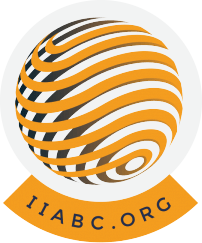
Agile certification 2019: Difference in IT & non-IT?
Agile IT and non-IT certifications are popular and more and more organizations want to become an expert. Working with short sprints instead of long projects. Working in multidisciplinary self-managing teams rather than between companies by working independently on projects. Many people from all sorts of industries want to learn to “scrum”. Agile and Scrum were originally developed for software development teams. Soon the interest grew to use this outside of the IT too. After all, there are plenty of non-IT organizations, who want to develop products and services in a flexible (Agile) way. If there is a need for Agile inside or outside the IT, training can be followed, and certificates are then obtained. It sounds very simple, however, what if employees of different teams are eager to become a certified Scrum Master, for example. Is it necessary for IT and non-IT certificates to be obtained? This blog explains the difference between IT and non-IT Agile & Scrum certifications.
IT Agile Certification
A big difference between IT and non-IT is the availability of team members: Software developers generally work full-time on a project. Outside the IT you often can’t pick up a project fulltime, because you are working on different projects at the same time. Agile and Scrum in IT is accompanied by software jargon and traditional assessments. The IT certifications are therefore focused on the process around software development. Exam participants must also have at least one year of experience in developing software. The certification of Agile in IT emphasizes the implementation of the Scrum roles and associated methods in software development.
Non-IT Agile Certification
In the non-IT, the target groups and customers are different: You do not create software for a user, but you, for example, develop a medicine, a bridge or a marketing campaign. In addition, non-IT teams often struggle with their jargon, which they don’t have to work with. Certifying just the group of people who apply Agile methods, but do not benefit from knowing all sorts of technical terms, we call non-IT certification. Moreover, when entering Agile in non-IT teams, an adaptation of the pure implementation of the Scrum roles (the rules, the roles, the tools) is necessary. The Agile culture, mentality and behaviour need at least as much attention. For this reason, the exam of non-IT certification focuses on the entire Agile culture, rather than only on the implementation of rules, roles, terms and methods. This Agile culture also includes other working methods, such as Kanban and Lean. These play therefore also a role in the Certification of non-IT and not at IT.

Kanban
Kanban is a method that can be applied to both project and operational activities. Kanban is a method to define, manage, and improve work (processes or projects). Think of a service such as complaint-handling or content production for a website.
Lean
Lean is a methodology for optimizing processes, which focuses on eliminating waste. The Lean concept means that customer value is central, which is leading to all business activities. Everyone thinks in terms of continuous improvement and wants to improve do it step by step. Besides customer value, employees are also essential. The employees are seen as the heart of the organization. Motivated employees are therefore a requirement for an organization which is Lean.
To come back to the question raised earlier; Do you need different certifications for IT and non-IT Agile employees? The answer will be; Yes. Colleagues in the IT must follow other training and therefore take other exams to become officially Agile certified, then non-IT employees.

More information about Agile certification, see also:
– Blog Total overview: ‘Online Scrum Master Certification!’